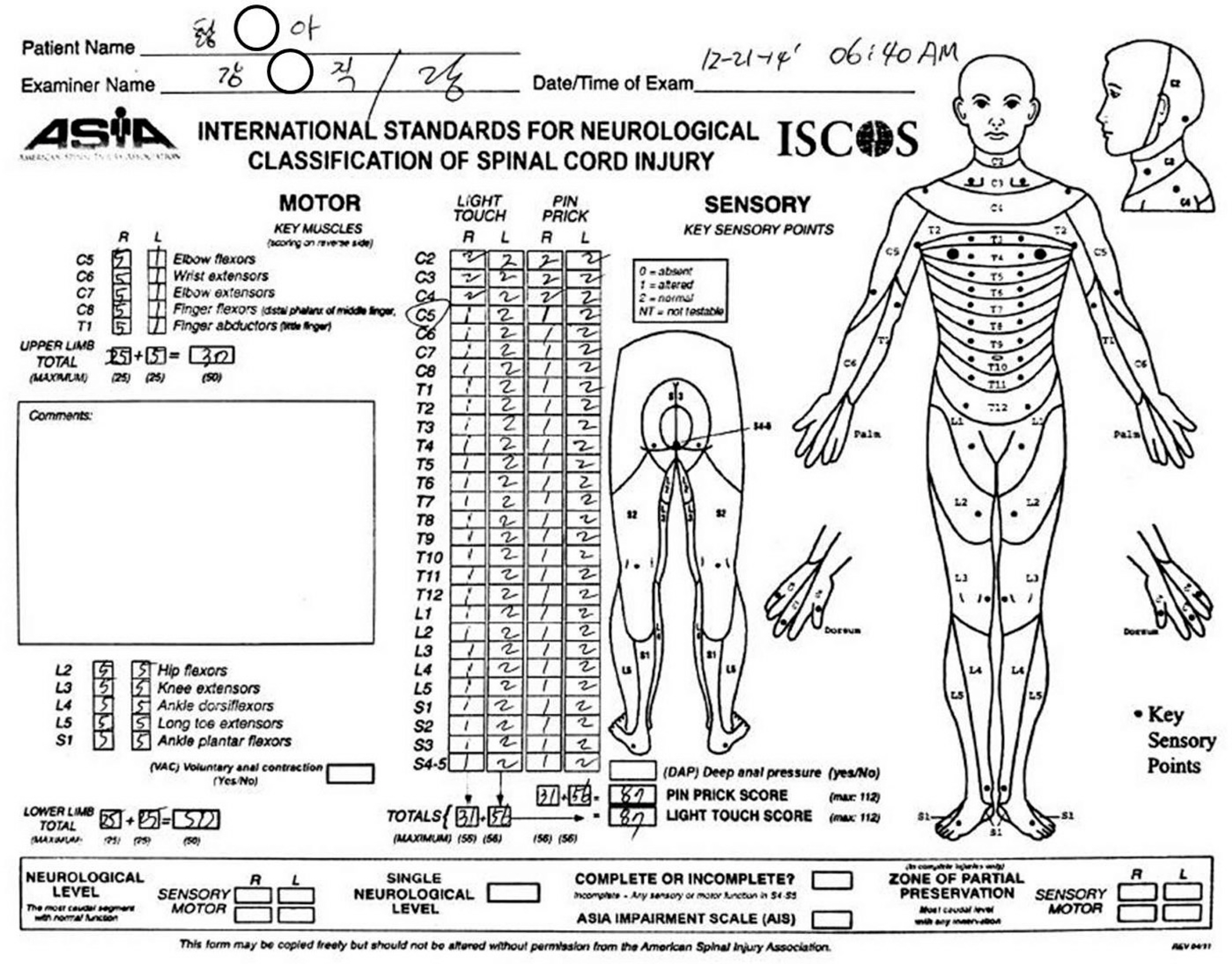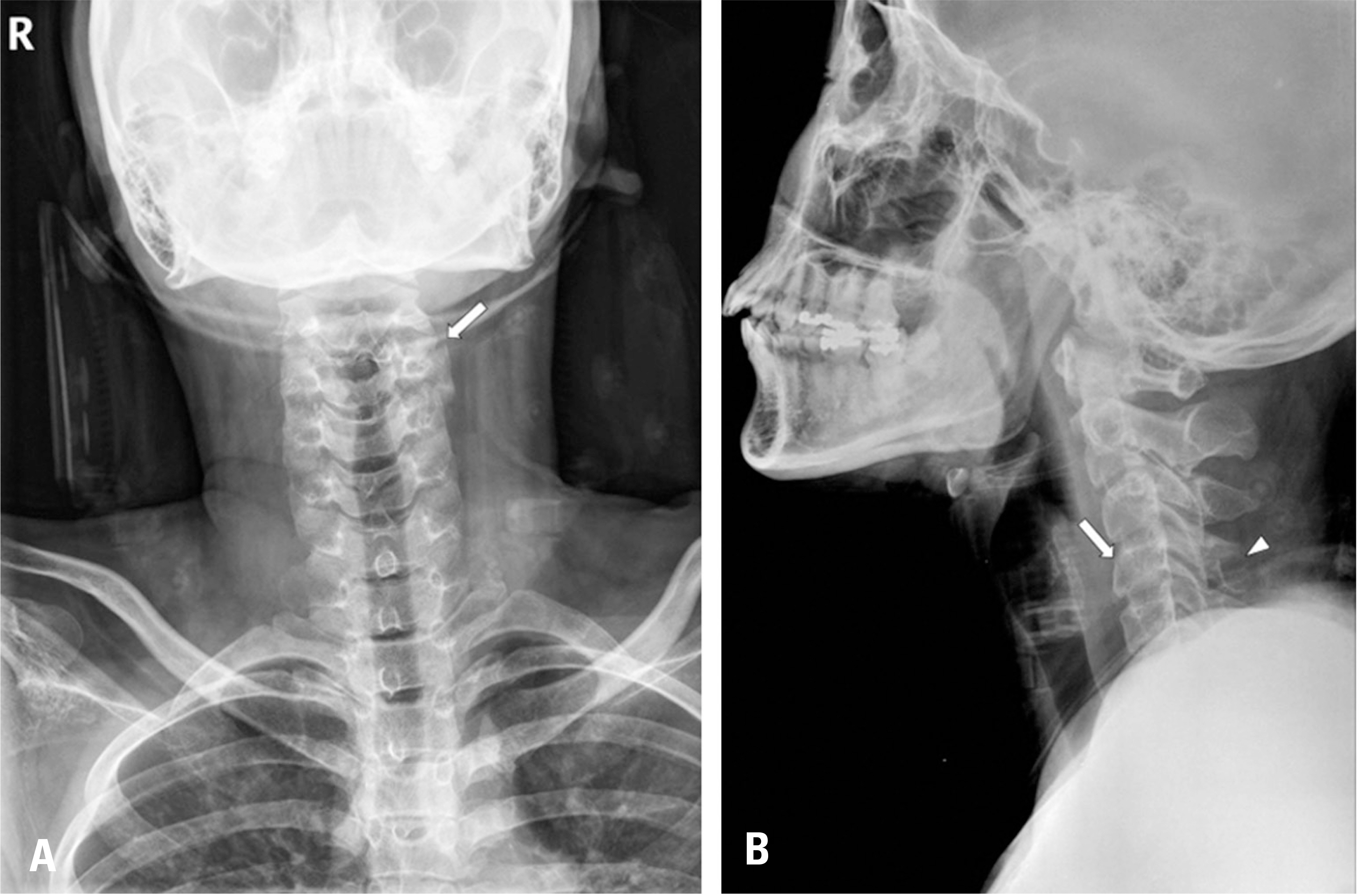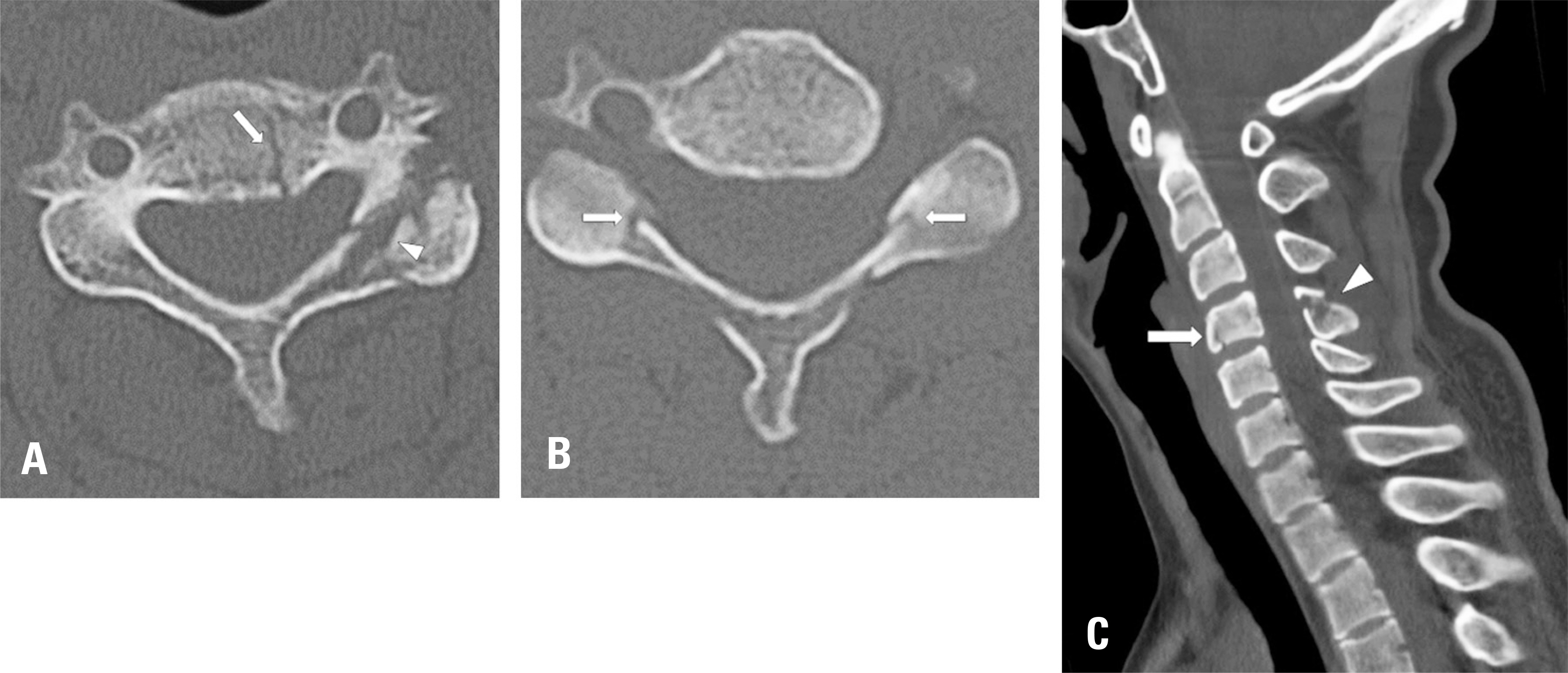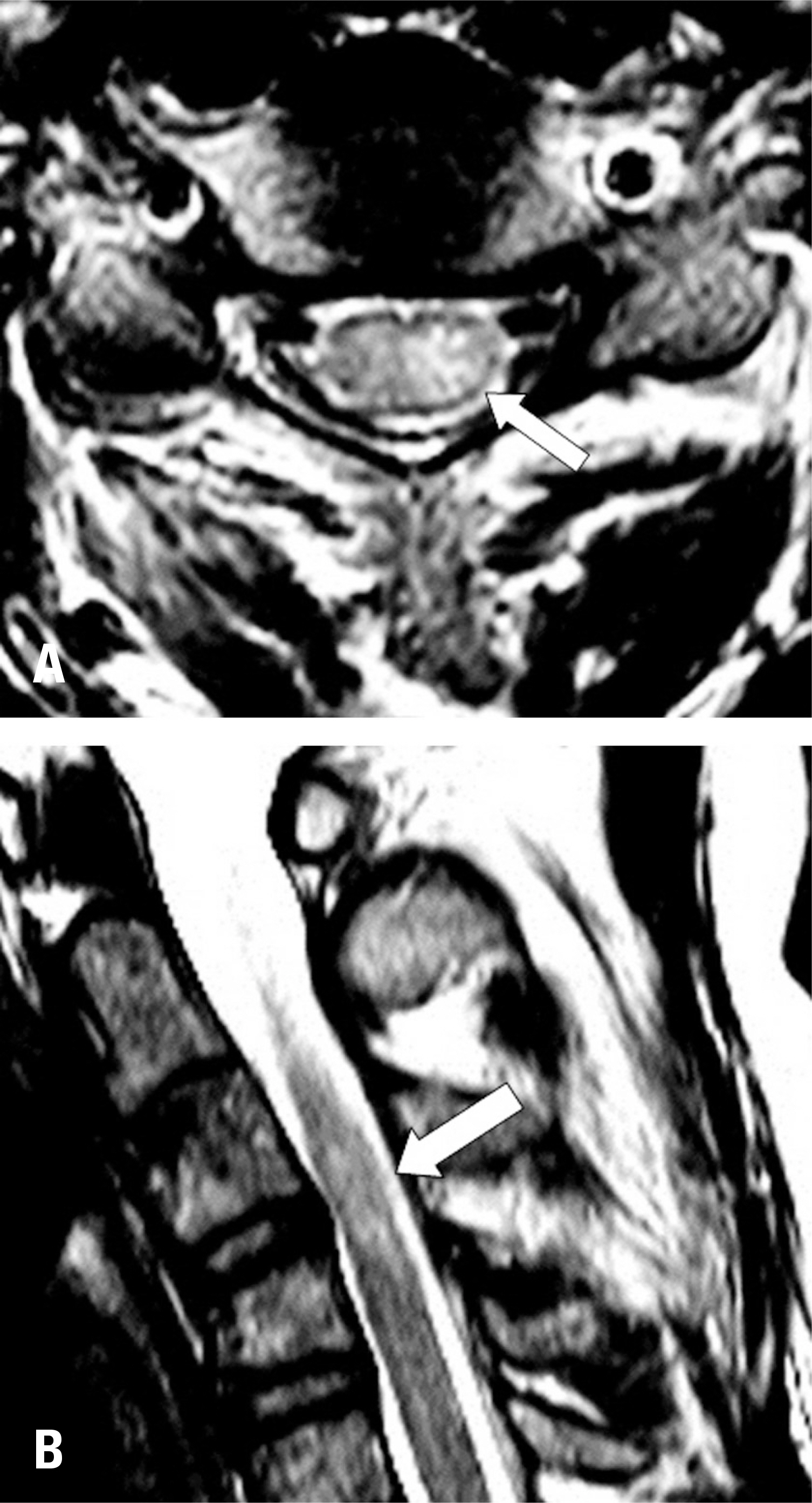J Korean Soc Spine Surg.
2017 Dec;24(4):252-256. 10.4184/jkss.2017.24.4.252.
Brown-Séquard Syndrome and Cervical Vertebral Fractures after Blunt Cervical Trauma in a Traffic Accident - A Case Report -
- Affiliations
-
- 1Department of Orthopaedic Surgery, Hanyang University College of Medicine, Seoul, Korea. cnkang65@hanyang.ac.kr
- 2Department of Orthopaedic Surgery, Sung-Ae Hospital, Seoul, Korea.
- KMID: 2408195
- DOI: http://doi.org/10.4184/jkss.2017.24.4.252
Abstract
- STUDY DESIGN: Case report
OBJECTIVES
To report a case of Brown-Séquard syndrome after blunt cervical trauma. SUMMARY OF LITERATURE REVIEW: Brown-Séquard syndrome is a rare disease characterized by hemisection of the spinal cord, and it shows the best prognosis of the various types of incomplete spinal cord injuries.
MATERIALS AND METHODS
A patient with Brown-Séquard syndrome that occurred after a traffic accident was followed up for 2 years and 6 months.
RESULTS
We observed normal recovery of motor strength, but sensory impairment and deep tendon hyperreflexia remained.
CONCLUSIONS
Brown-Séquard syndrome is known to have a good prognosis, but in this case, the neurological abnormality did not fully recover; therefore, we report this rare case and present a review of the literature.
MeSH Terms
Figure
Reference
-
1. McKinley W, Santos K, Meade M, et al. Incidence and outcomes of spinal cord injury clinical syndromes. J Spinal Cord Med. 2007; 30(3):215–24. DOI: 10.1080/10790268.2007.11753929.
Article2. Miranda P, Gomez P, Alday R, et al. Brown-Sequard syndrome after blunt cervical spine trauma: clinical and radiological correlations. Eur Spine J. 2007 Aug; 16(8):1165–70. DOI: 10.1007/s00586-007-0345-7.
Article3. Brown-séquard E. Experimental and Clinical Researches on the Physiology and Pathology of the Spinal Cord, and some other parts of the Nervous Centres. Am J Med Sci. 1855 Jul; 30(59):161–5. DOI: 10.1097/00000441-185507000-00023.
Article4. Johnson S, Jones M, Zumsteg J. Brown-Séquard syndrome without vascular injury associated with Horner's syndrome after a stab injury to the neck. J Spinal Cord Med. 2016; 39(1):111–4. DOI: 10.1179/2045772314Y.0000000297.
Article5. Garcia-Manzanares M, Belda-Sanchis J, Giner-Pascual M, et al. Brown-Sequard syndrome associated with Horner's syndrome after a penetrating trauma at the cervicomedullary junction. Spinal Cord. 2000 Nov; 38(11):705–7. DOI: 10.1038/sj.sc.3101062.
Article6. Roth EJ, Park T, Pang T, et al. Traumatic cervical Brown-Sequard and Brown-Sequard-plus syndromes: the spectrum of presentations and outcomes. Paraplegia. 1991 Nov; 29(9):582–9. DOI: 10.1038/sc.1991.86.
Article7. Mataliotakis GI, Tsirikos AI. Spinal cord trauma: pathophysiology, classification of spinal cord injury syndromes, treatment principles and controversies. Orthop Trauma. 2016; 30(5):440–9. DOI: 10.1016/j.mporth.2016.07.006.
Article8. Oller D, Boone S. Blunt cervical spine Brown-Séquard injury. A report of three cases. Am Surg. 1991 Jun; 57(6):361–5.9. Little JW, Halar E. Temporal course of motor recovery after Brown-Sequard spinal cord injuries. Spinal Cord. 1985 Feb; 23(1):39–46. DOI: 10.1038/sc.1985.7.
Article10. Lim E, Wong Y, Lo Y, et al. Traumatic atypical Brown-Sequard syndrome: case report and literature review. Clin Neurol Neurosurg. 2003 Apr; 105(2):143–5. DOI: 10.1016/s0303-8467 (03)00009-x.
Article
- Full Text Links
- Actions
-
Cited
- CITED
-
- Close
- Share
- Similar articles
-
- Cervical Spinal Cord Infarction Presenting Brown-Séquard-plus Syndrome
- Unilateral loss of thoracic motion after blunt trauma: a sign of acute Brown-Séquard syndrome
- Extradural Cervical Disc Herniation Causing Sudden Brown-se'quard Syndrome: A Case Report
- Vertebral Artery Injury Following Blunt Trauma to the Cervical Spine Case Report and Literature Review
- Brown-Séquard Syndrome Caused by Acute Traumatic Cervical Disc Herniation





